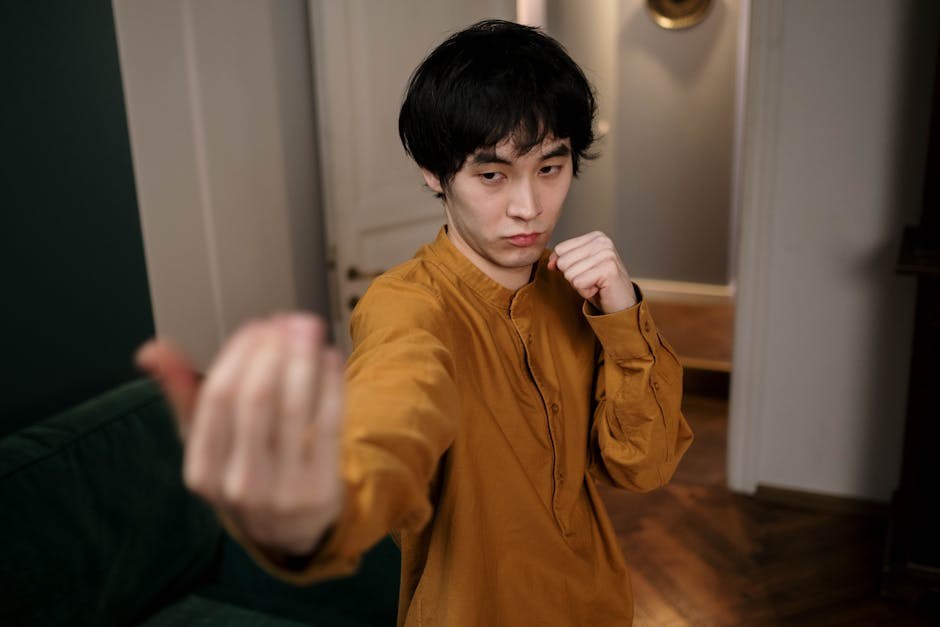For many couples, the months of distancing and indoor days were supposed to be a pause button – a chance to slow down and reconnect. Instead, everything sped up. Small quirks became loud, routines collided, and the future felt blurry. If your relationship changed during quarantine, you are not alone; that season placed ordinary love under extraordinary pressure. What matters now is not whether the shift happened – it clearly did – but how you understand it and what you do next.
What actually shifted – and why it feels so intense
Change inside a partnership rarely happens in a straight line. Isolation amplified some dynamics and muted others, and the result can be disorienting. Perhaps living together around the clock exposed differences in pacing, privacy, or purpose. Perhaps the silence between video calls felt heavier than usual. If your relationship changed during quarantine, the intensity you feel is a natural response to sudden, prolonged proximity combined with uncertainty about work, health, and plans.
It helps to name the context. The two of you weren’t simply spending more time together – you were coping with closures, shifting roles at home, and fewer outlets. The “missing pieces” of normal life – friends, commutes, hobbies – act as buffers. When those buffers disappeared, core habits came into view. If your relationship changed during quarantine, you probably saw patterns you used to overlook: who initiates connection, who needs quiet to think, who rushes toward solutions, who withdraws to regulate emotions.

Before you make big decisions, slow down on purpose
Urgency is tempting after long uncertainty. But meaningful choices deserve unhurried attention. If your relationship changed during quarantine, take a breath. You don’t need to decide everything today. You do need to create a structure that lets you hear yourselves – and each other – clearly.
A practical roadmap you can adapt
The ideas below reorganize familiar wisdom for an unusual moment. They invite you to reflect, talk, and rebuild – not as an attempt to rewind the clock, but to honor what you learned. If your relationship changed during quarantine, treat that shift as information. Use it.
Step back to see the whole picture – not just the last argument. Take short, intentional time apart. Go for separate walks, journal for ten minutes, or sit in different rooms without screens. The aim isn’t avoidance; it’s perspective. When your relationship changed during quarantine, everyday friction may have started to feel like a verdict. Space helps you remember that one tense afternoon does not define an entire bond.

Try a weekly solo hour – each person does something restorative and reports back one insight.
Write a brief timeline: before isolation, during, after. Where did you feel most connected? Least?
Normalize evolution – relationships are living systems. Partnerships breathe, stretch, and sometimes ache as circumstances shift. If your relationship changed during quarantine, that doesn’t automatically mean it weakened; it means it responded. Reframing the story reduces defensiveness and makes room for curiosity.

Replace blame with observation: “Our mornings got tense when we both needed the same desk.”
Invite meaning: “What did that season teach us about energy and boundaries?”
Name the external pressures – then separate them from core issues. The context was not neutral. Illness worries, job shifts, and fewer supports all add intensity. If your relationship changed during quarantine, ask which tensions came from outside and which revealed long-standing patterns.
Make two columns: “Context” and “Core.” Put “closed gyms” under context; put “we avoid hard talks” under core.
Address “Core” items with patience – those are the ones that shape the future.
Talk like teammates – not like opposing counsel. Conversation is the tool; tone is the handle. Set a time, sit side by side, and use simple frameworks: what was hard, what helped, what you need now. If your relationship changed during quarantine, you’ll need new language to match the new landscape.
Swap accusations for impact: “When meetings ran late, I felt unimportant – I want a quick text heads-up.”
Keep requests specific and doable – vagueness breeds disappointment.
Identify the real topics underneath the recurring fights. Dishes aren’t just dishes; they’re about fairness, attention, and care. If your relationship changed during quarantine, you likely circled the same few themes. Choose one theme and stay with it long enough to learn something new.
Ask, “What does this stand for?” Then ask again. Often the third answer is the true one.
Document one pattern you want to change – and one you want to keep.
Turn differences into design features. You may recharge in opposite ways – one seeks company, the other craves silence. Instead of trying to flatten those differences, build around them. If your relationship changed during quarantine, notice how varied temperaments can create balance when they’re respected.
Create mixed rituals: twenty minutes of shared coffee, then parallel quiet time.
Trade strengths: planner organizes meals; improviser creates spontaneous fun.
Halfway through any reset, motivation dips – that’s normal. Pause to appreciate small wins. If your relationship changed during quarantine, you’re building a new rhythm; early stumbles are part of learning to dance again.
Rekindle physical closeness with intention, not pressure. Intimacy after a stressful stretch can feel awkward. Start where you are. Nonsexual touch, shared showers, cuddling on the couch – these can reopen the channel. If your relationship changed during quarantine, let desire return as safety returns; tenderness invites passion.
Schedule a “no-expectations” evening: massages, slow music, cozy lighting, phones in a drawer.
Use words during touch – “slower,” “right there,” “so good” – to rebuild trust and feedback.
State your needs clearly – then co-create a plan. Hints are hard to decode, especially when stressed. If your relationship changed during quarantine, try unambiguous statements followed by a simple agreement.
“I need a goodbye kiss before work. Can we make that a daily ritual?”
“I need help with bedtime twice a week. Which nights can you own?”
Invite a neutral guide when you’re stuck. Therapy is not a last resort – it’s a workshop for better tools. If your relationship changed during quarantine, a counselor can help you translate raw feelings into workable practices.
Arrive with one concrete goal: communicate without spiraling, share tasks fairly, or reconnect physically.
Between sessions, practice micro-skills – pausing, reflecting back, apologizing well.
Decide which changes you welcome – and which you don’t. Not every shift deserves to stay. If your relationship changed during quarantine, sift through the changes like you would a closet: keep what fits, mend what’s torn, donate what no longer serves.
Keep: nightly walks that sparked real conversation.
Mend: knee-jerk sarcasm when stressed – replace with “I’m overwhelmed; can we pause?”
Discard: silent scorekeeping – replace with clear asks.
Remember there are two authors of this story. You don’t carry it alone. If your relationship changed during quarantine, your partner lived that story too – with their own fears and hopes. Make space to hear their version without defending yours.
Use a talking piece – whoever holds it speaks; the other paraphrases before replying.
End with one appreciation each – gratitude softens the edges and builds momentum.
Turning insights into daily practices
Grand declarations fade; habits last. If your relationship changed during quarantine, translate reflection into routines that don’t rely on willpower alone. Small, predictable actions reduce friction and create a climate where warmth grows naturally.
Weekly check-in. Set aside a consistent time. Share highs, lows, and one request. If your relationship changed during quarantine, a reliable rhythm repairs the sense of wobble.
Shared calendar for energy, not just tasks. Note big work days, social needs, and recovery time. If your relationship changed during quarantine, this protects against accidental collisions.
Micro-rituals of connection. A six-second hug, a morning touch on the shoulder, a “how’s your heart?” text – tiny threads weave strong fabric.
Repair scripts. Conflicts happen. Decide in advance how to repair: a cooling-off phrase, a reset walk, an apology that names the impact. If your relationship changed during quarantine, having a plan reduces dread and speeds recovery.
Listening for the future hiding inside the present
Sometimes change reveals mismatch more than growth. That’s hard – and honest. If your relationship changed during quarantine and you realize your values point in different directions, respect that truth. Respect doesn’t mean rushing to exit; it means acknowledging reality with kindness, exploring options together, and treating each other with dignity whether you rebuild or release.
Other times, change uncovers resilience you didn’t know you had. Perhaps you learned to calm each other during spirals, or to laugh in the middle of a messy kitchen, or to say, “I’m scared,” without flinching. If your relationship changed during quarantine, those muscles – humility, humor, presence – are part of the upgrade.
Making meaning from a strange chapter
Meaning-making is the quiet engine under healing. Try a simple exercise: tell the story of the isolation period as if it were a novel. Name the setting, the turning point, the allies, the lessons. If your relationship changed during quarantine, crafting a shared narrative helps transform random stress into a coherent chapter. It also highlights what you want more of – and what you can leave behind.
As you narrate, sprinkle in gratitude. Not the performative kind, but the everyday variety: the coffee your partner brought without being asked, the playlist they made, the patience they showed while you learned a new skill. If your relationship changed during quarantine, gratitude keeps you tethered to the good while you work on the hard.
Boundaries that make connection easier
Healthy boundaries aren’t walls; they’re guardrails. Decide how you’ll handle technology at home, social plans after long weeks, and the balance of chores and rest. If your relationship changed during quarantine, you might need stronger boundaries around work hours or clearer signals for “do not disturb.” Communicated kindly, these lines reduce friction and free up energy for warmth.
Technology. Phones out of the bedroom, or a shared basket at dinner. If your relationship changed during quarantine, protecting attention protects affection.
Alone time. Each person chooses a weekly window with no obligations – the other defends it. This honors difference without threat.
Chores. Divide by preference and capacity, then revisit monthly. If your relationship changed during quarantine, stale arrangements may need refreshing.
Choosing gentleness as a strategy
Gentleness isn’t weakness – it’s precision. Tense seasons prompt sharp edges; softening them takes intention. If your relationship changed during quarantine, practice micro-gentleness: slower replies, kinder interpretations, and generous assumptions. Speak to your partner the way you want to be remembered – with respect even when you disagree.
When rupture happens – and it will – repair as soon as possible. Acknowledge, apologize, and ask how to make amends. If your relationship changed during quarantine, timely repair prevents small cracks from widening into chasms.
Returning to joy on purpose
Joy rarely barges in; it arrives when invited. Schedule play: cook something new together, revisit inside jokes, dance terribly in the kitchen. If your relationship changed during quarantine, reclaiming lightness is not trivial – it’s medicine. You endured a chapter defined by restriction; choose a chapter defined by possibility.
In the end, love is a daily craft. If your relationship changed during quarantine, let that reality sharpen your attention, not dim your hope. Talk, listen, touch, laugh, draw boundaries, repair quickly, and keep choosing each other – or, if needed, keep choosing honesty. Either way, you are writing a wiser story now.